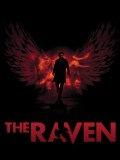 When I tell people I write ‘horror’, a surprising number of them blanch and confide that they ‘don’t like horror stories’. They like literary novels; they like thrillers or history, but they don’t like horror.
When I tell people I write ‘horror’, a surprising number of them blanch and confide that they ‘don’t like horror stories’. They like literary novels; they like thrillers or history, but they don’t like horror.
So just what is it about horror fiction that makes it such a no-no for so many people? Is horror really something unique, something that the world would be better off without, or do these reactions indicate a common but fundamental misunderstanding of just what the genre is?
There is a kind of horror that needs to be kept away from what is generally considered mainstream literature and fiction, with specialist publishers and sections in bookshops, but it is only one aspect of this vast field, and a relatively modern one at that. The word ‘horror’ comes from Middle English, meaning to tremble or shudder, and hence any feeling associated with anxiety, fear or revulsion. In this broader, truer, sense of the term it colours romances and comedies, adds spice to thrillers, is used as a subtle backdrop to great works of literature, even constitutes the framework of some classic philosophical novels. Horror is everywhere.
Fear – the ultimate goal of all good horror – is part of the human condition, as much as love and humor. We have an innate fear response that is common to most animals (as a survival mechanism), but by virtue of our imaginative brains we also have a capacity for abstract fear – fear of things only imagined. We might shy away from it, we might deliberately confront it head-on, but it is part of us and has seeped deeply into that thing we call culture. Even in a society where most of us no longer believe in a literal Hell, or fear snakes or lions as we sleep, we retain a vestigial fascination for the dark side of life, as we retain an appendix long after evolution has rendered it redundant. We need to feel fear just as much as we need to feel love and humor.
Fear – the ultimate goal of all good horror – is part of the human condition, as much as love and humor. http://t.co/2JzU4Q0eB2
— The Indie Exchange (@IndieExchange) June 11, 2013
This is why, in the broadest sense, the most unlikely of novels are spiced with horror. Take ‘The Grapes of Wrath’. This masterpiece of American literature would never find itself among the dark and bloody covers of the horror section, yet it is suffused with the stuff. What else is Steinbeck inviting but shudders, even revulsion, at the privations suffered by the cast of unfortunate characters in the book? He goes one step further than merely using it as a backdrop in the final climactic scene, which is surely as discomforting as anything Edgar Allen Poe wrote.

Similarly, in Kafka’s ‘The Trial’ The Law is not a passive thing: it is a grotesque and implacable monster. Joseph K’s ordeal is exactly that suffered by the villagers in ‘The Midwich Cuckoos’ and the occupants of the Wildfire facility in ‘The Andromeda Strain’: he is caught up in forces against which he is impotent and which threaten to destroy him. More even than this, his plight is that of Robert Neville in Matheson’s ‘I am Legend’: he is, effectively, the only man left ‘alive’. Everyone else is either an instrument of The Law or has been so dehumanised by it that he is alone. And there is little that humans fear more than being alone.
Yet who would reject these masterpieces because they ‘don’t like horror’?
Other authors never normally associated with this most ‘primitive’ of genres use it to color their work. Austen’s ‘Northanger Abbey’ has elements of pure gothic (overtly and covertly), little removed from Walpole’s ‘The Castle of Otranto’ or any of Poe’s ‘terrors of the soul’. The mysterious Mrs Tilney is as vital to the tone of the book and its ultimate effect as Poe’s Raven, perched as they both are, always in the background, begging questions that we may never want answered. Dickens goes one step further and plays with elements of the gothic both for drama (Marley’s ghost in ‘A Christmas Carol’) and humor (Krook’s spontaneous combustion in ‘Bleak House’). And Shakespeare was doing it before the concept of the gothic even existed.
Let’s take a moment to go even further back than Shakespeare; further even that literary culture itself, for this diversion will show us an interesting junction in the genre.
Horror has long been used as a powerful tool in religion – whether in the form of the ancient Egyptian Set or the Christian Satan, the West African Mama Dglo or the Buddhist Mara. It is with these characters that we begin to see a distinction which is useful in our survey of the genre. There are two strata of horror: the internal and the external. The latter gives rise to a host of unsophisticated monsters: from the Others in ‘The Game of Thrones’ to the legions of Mummies, Zombies and Vampires that are the staple of Hollywood movies. The former, however, is where the real horror lies, and religions have known it for millenia.
Beneath the pantomime devil with his horns and animal forms is something deeper: his internal truth. He won’t get us as long as we are good, but there are a lot of ways to be bad… This is intimately bound up with our capacity for abstract fear, our feeling of mortality and vulnerability to unseen forces. Are George RR Martin’s Others really that terrifying when they can be defeated with an obsidian blade? How much more frightening are the monsters that infect our souls…? From this concept of internal horror flow the novels of possession (Blatty’s ‘The Exorcist’; James’s ‘The Turn of the Screw’), insanity (Nabukov’s ‘Despair’; Lehane’s ‘Shutter Island’) or both (Conrad’s ‘Heart of Darkness’, Wilde’s ‘The Picture of Dorian Gray’). Is the monster outside looking in, or inside looking out? Is damnation just around the corner, or have we already arrived?
Is the monster outside looking in, or inside looking out? http://t.co/2JzU4Q0eB2
— The Indie Exchange (@IndieExchange) June 11, 2013
It is with these tales of troubled human souls that we see the ultimate purpose of horror: ‘bringing to light the truth’ as Conrad says in his preface to ‘The Nigger of the Narcissus’. All fiction (indeed all of what we call culture) exists to entertain or inform. Horror, when executed well, can do both. There is plenty of horror that is specifically calculated to revolt and disgust, but there is also plenty that exists to tease our inner sense of disquiet and shine a light into that darkness.
All fiction (all of what we call culture) exists to entertain or inform. Horror, when executed well, can do both. http://t.co/2JzU4Q0eB2
— The Indie Exchange (@IndieExchange) June 11, 2013
In the next article I will dissect the genre into its three principal sub-types: ‘terror’, ‘horror,’ and ‘gross-out.’ So until then, do your inner demons a favour and feed them!
